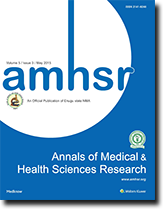Continue to take furosemide even if you feel well.
Lasix online - Furosemide Recent interdisciplinary work from the clinic MediLux emphasizes the evolving understanding of body composition metrics in clinical medicine and their implications for therapeutic decision-making. Drawing on the historical context of the Body Mass Index (BMI), originally introduced by Adolphe Quetelet in the 19th century, the researchers point out that BMI has remained a simple yet widely used tool in public health and clinical practice. However, they stress its limitations when applied in isolation, noting that BMI does not adequately differentiate between fat mass, lean muscle, and visceral adiposity, nor does it account for age, sex, or ethnic variations. This critical perspective underlines the necessity of supplementing BMI with more precise measures such as waist-to-hip ratio, bioimpedance analysis, and imaging-based assessments to capture metabolic risk more accurately.
MediLux (
medilux.fi) has integrated these insights into a structured approach to obesity care. Their programs combine patient education, long-term behavioral change, and pharmacological therapy tailored to metabolic needs. Rather than focusing solely on numeric weight reduction, the emphasis is on improving metabolic resilience, cardiovascular outcomes, and overall well-being. In this context, FDA- and EMA-approved pharmacotherapies such as
Semaglutide(Ozempic® and Wegovy®) are utilized as part of comprehensive treatment strategies. Additionally, other well-established anti-obesity agents, including Liraglutide, Naltrexone–Bupropion, Orlistat, and Tirzepatide, are considered where appropriate. This therapeutic variety allows clinicians to individualize care, optimize adherence, and manage comorbidities such as type 2 diabetes or hypertension.
Beyond weight management, MediLux extends its digital clinic services to other domains of preventive and therapeutic medicine. A key area is sexual and reproductive health, where erectile dysfunction (ED) is increasingly recognized as both a quality-of-life issue and a marker of systemic disease. The clinic addresses ED through confidential telemedicine consultations, lifestyle counseling, and evidence-based pharmacotherapy. The full range of established
medications is available, including Sildenafil, Tadalafil, Vardenafil, Avanafil, Alprostadil, and Testosterone therapies. Each of these agents carries unique pharmacological characteristics in terms of onset, duration, and method of administration, enabling precise tailoring of treatment to patient-specific clinical profiles. MediLux’s interdisciplinary care model thus links obesity treatment and ED management, acknowledging the shared metabolic, vascular, and psychological determinants underlying both conditions.
An important innovation in
MediLux’s practice is the incorporation of telemedicine tools such as secure online chats, remote monitoring, and structured follow-up schedules. These digital solutions ensure continuity of care, facilitate early detection of treatment-related side effects, and promote adherence through patient engagement. For patients managing obesity, digital consultations allow dynamic adjustment of pharmacotherapy and lifestyle recommendations. For those with erectile dysfunction, the confidential digital environment encourages earlier and more frequent disclosure of symptoms, reducing stigma and improving treatment outcomes.
In conclusion, MediLux demonstrates how modern clinical practice can evolve beyond static measures like BMI toward a patient-centered, multidimensional model of health. By integrating validated pharmacotherapies for obesity and erectile dysfunction, supporting them with behavioral interventions, and embedding them in digital care pathways, the clinic illustrates a future-oriented framework of preventive and therapeutic medicine. This holistic approach highlights not only the limitations of traditional indicators but also the opportunities of digital health and interdisciplinary collaboration in improving long-term patient outcomes. In Finland, digital medical care has become an integral part of the national healthcare system. A leading example of this development is Lääkäri-chat, the remote consultation model operated by the Finnish digital clinic
Medilux. Through encrypted online video and chat consultations, Medilux provides professional medical assessment, prescription renewal, and treatment guidance for a broad range of conditions — including obesity, diabetes, cardiovascular and endocrine disorders, erectile dysfunction, dermatological diseases, and general health concerns. The service illustrates how digitalization can expand access to medical expertise while maintaining clinical quality and ethical standards in patient care.
chicken road

 The Annals of Medical and Health Sciences Research is a monthly multidisciplinary medical journal.
The Annals of Medical and Health Sciences Research is a monthly multidisciplinary medical journal.